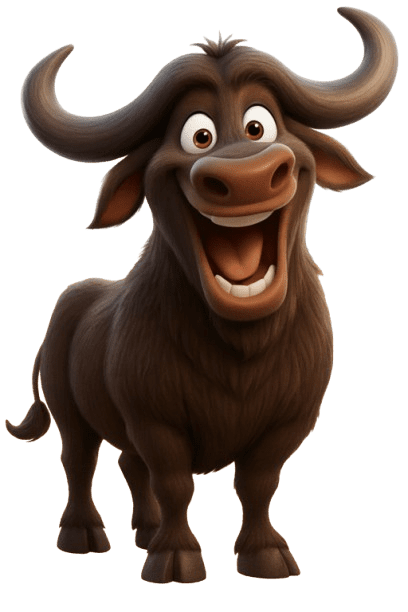How to Identify a High-Quality Cow
- Home
- Cattle Knowledge
- How to Identify a High-Quality Cow
How to Identify a High-Quality Cow: Key Physical Characteristics Every Farmer Should Know
When buying a cow, especially for dairy farming, physical assessment is just as important as breed and lineage. A cow’s body structure, shape, and visible traits can tell you a lot about her milk-producing capacity, health, and longevity. Whether you are purchasing from a cattle fair, a breeder, or directly from a farm, knowing what to look for can help you choose the right animal and avoid costly mistakes.
In this guide, we’ll explore the important physical characteristics to check before buying a cow — from head to tail — and understand why each feature matters for milk production and overall performance.
Face and Head Structure
The first thing to observe is the cow’s face. A balanced and slightly elongated face indicates good breed quality, especially in Holstein cows.
The upper part of the face should be slightly shorter than the lower part.
The forehead should be broad and flat.
Such a facial structure shows purity in breed and better respiratory efficiency.
The cow’s ears should be medium-sized — neither too long nor too short. This is another sign of a healthy and active animal.
Skin and Neck
A cow’s skin says a lot about her metabolism.
The skin should be thin and elastic, not thick or hard.
Thick-skinned cows tend to store excess fat, which reduces milk production.
A thin-skinned animal, on the other hand, converts feed into milk efficiently rather than fat.
Check the neck area for loose skin folds — this shows good flexibility and health.
Shoulders and Chest
The shoulder region should be tight and well-attached. If the shoulders appear loose or gaps are visible between the joints, it can mean the animal is aging or has weak muscles.
Next, look at the chest.
A broad and deep chest is ideal because it provides more room for the lungs and heart.
Larger lungs mean better oxygen intake and stronger blood circulation — both essential for high milk yield.
However, make sure no water or fluid is deposited around the chest area, as that may indicate liver or internal issues.
Legs and Joints
When examining the legs:
The cow should stand firmly on all four legs, without signs of swelling or joint fluid.
The front legs should be straight, and the hooves (claws) properly aligned.
There should be four fingers’ width between the front hooves and two fingers between the hind ones.
If the cow’s pastern joints (just above the hooves) are pink or swollen, it means she cannot stand for long, which affects feeding and ultimately milk output.
Ribs, Abdomen, and Barrel
Always observe the cow from the left side, as the rumen (stomach) is located there.
You should be able to comfortably fit two to three fingers between the ribs.
The ribs should feel soft and flexible, not hard. This flexibility indicates the cow can expand her rumen easily and consume more dry matter, leading to higher milk production.
The barrel, or belly, should be large and rounded — a sign that the cow can digest large amounts of feed efficiently.
Milk Wells and Veins
Below the abdomen, observe the milk wells — small veins or holes that lead to the udder.
Well-developed, twisted, and prominent milk veins indicate a strong milk-producing system.
A large, twisted milk vein shows that blood circulation to the udder is strong — vital for milk flow.
For context: to produce one liter of milk, a cow must pump about 3,000 liters of blood through her udder! So, stronger veins mean higher production potential.
Udder Structure
The udder is one of the most critical points of inspection.
The udder should be tight, high, and symmetrical — not hanging low or uneven.
A visible central ligament (called the suspensory ligament) supports the udder. If this ligament is weak, the udder may sag and become prone to injury or infection.
Look for multiple skin folds on the udder; more folds indicate greater capacity and elasticity.
A good dairy cow will have a well-divided udder, with teats properly spaced — not touching the hind legs. If the hind legs are too close, the udder can get squeezed, causing discomfort and lowering milk yield.
Back and Body Length
The body should be long and proportionate, with a straight back.
From the front to the hind legs, the cow’s body should measure around 4 to 4.5 feet in length (depending on breed and size).
Longer cows generally have better digestion capacity and feed conversion efficiency.
A deep and slightly sloped back is considered a desirable trait in Indian Holstein and cross-bred cows.
Hindquarters and Calving Ease
The distance between the hip bones and tail base should be wide enough to allow easy calving.
A narrow pelvic area can cause complications during delivery.
Check that the bones are not too tight — at least two fingers’ space is ideal.
The area between the vulva and the udder should also be clean and free from discharge or swelling.
Muscular vs. Fatty Animals
Prefer a muscular cow over a fatty one. Muscular cows have stronger frames, better stamina, and longer productive life. Fatty cows may look healthy but often consume feed without producing sufficient milk
Veins and Blood Circulation
Prominent veins on the udder and body surface are a strong indicator of milk productivity.
Better blood circulation means more nutrients reach the udder, leading to higher and more consistent milk output.
App Downloads
Advisor’s Team

Social Media Reach

Happy Customers



Subscribe To Our Newsletter
Welcome to TabelaWala, brand name of White Gold Livestock Private Limited, the ultimate marketplace for dairy farmers looking to buy or sell cows and buffaloes online as well as offline.

+91 830 570 6703
Got Questions? Call us 24/7


